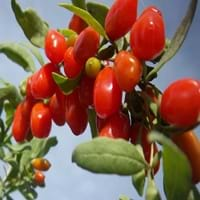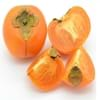Health Benefits
Cancer prevention, Heart care, Heat stroke treatment, Improves eye vision, Weight loss properties
Anti-oxidant properties, Eye care, Helps in cartilage regeneration, Regulates Blood Sugar, Treatment of osteoarthritis
General Benefits
Anti-inflammatory properties, Boosts immune system, Cures cough, Digestive aid, Fights against infections, Improves blood circulation
Boosts immune system, Digestive aid
Skin Benefits
Anti-aging benefits, Brightens and lightens complexion, Reduces wrinkles
Anti-aging benefits, Reduces wrinkles, Treatment of skin diseases
Hair Benefits
Promotes longer and healthier hair, Protects hair
Protects hair, Regulates hair growth
Allergy Symptoms
Abdominal pains, Anaphylaxis, Inflammation
Anaphylaxis, Itching, Sneezing, Wheezing
Side Effects
Diarrhoea, Might affect blood pressure level
May interact with some drugs
Best Time to Eat
Along with meal, As a snack in the late afternoon, Don't consume at night and before bed, Morning time (before lunch)
Any time except an hour after meal, Don't consume at night and before bed
Vitamin B5 (Pantothenic Acid)
Not Available
Vitamin C (Ascorbic Acid)
Vitamin K (Phyllochinone)
Calories in Fresh Fruit with Peel
Calories in Fresh Fruit without Peel
Not Available
Not Available
Calories in Frozen Form
Not Available
Calories in Canned Form
Not Available
Not Available
Type
Berry, Tree fruit
Berry
Season
Autumn, Winter
Autumn
Varieties
Fuyu, Jiro, Gosho, Suruga, Hiratanenashi, Hachiya, Aizumishirazu, Yotsumizo, Yokono, Costata, Ormond and Tamopan
No Types
Color
Orange, Red, Yellow
Scarlet red
Inside Color
Orange
Orange
Taste
Sweet
Slightly bitter, Tart
Origin
Burma, China, India, Japan
Unknown
Soil Type
Sandy loam, Well-drained
Well-drained
Climatic Conditions
Can tolerate wide range of climates
Cold, Hot
Facts about
- Unripe persimmons contain lots of tannin which is used to brew sake & to preserve wood in Japan.
- A small non-edible fruit of persimmon tree is crushed with water, the solution is painted on paper & used to repel mosquitoes.
- Study says a man named Li Qing Yuen used to eat goji berries daily and lived for 252 years.
- They are also known as wolfberries in India & China.
- This fruit is used for spiritual purposes at many places.
Spirits
Not Available
Yes
Cocktails
Not Available
Yes
Other Countries
Azerbaijan, Brazil, Israel, Italy, Japan, Pakistan
Canada, France, India, United States of America
Top Importer
United States of America
United States of America
Botanical Name
Diospyros kaki
Lycium barbarum
Synonym
Not Available
Wolfberry
Subkingdom
Tracheobionta
Tracheobionta
Division
Magnoliophyta
Unknown
Class
Magnoliopsida
Unknown
Subclass
Dillenhidae
Asteridae
Family
Ebenaceae
Solanaceae
Species
D. kaki
L. barbarum
Generic Group
Not Available
Not Available
Difference Between Japanese Persimmon and Gojiberry
We might think that Japanese Persimmon and Gojiberry are similar with respect to nutritional value and health benefits. But the nutrient content of both fruits is different. Japanese Persimmon and Gojiberry Facts such as their taste, shape, color, and size are also distinct. The difference between Japanese Persimmon and Gojiberry is explained here.
The amount of calories in 100 gm of fresh Japanese Persimmon and Gojiberry with peel is 70.00 kcal and 32.00 kcal and the amount of calories without peel is Not Available and Not Available respectively. Thus, Japanese Persimmon and Gojiberry belong to and category.These fruits might or might not differ with respect to their scientific classification. The order of Japanese Persimmon and Gojiberry is Ericales and Solanales respectively. Japanese Persimmon belongs to Ebenaceae family and Gojiberry belongs to Solanaceae family. Japanese Persimmon belongs to Diospyros genus of D. kaki species and Gojiberry belongs to Lycium genus of L. barbarum species. Beings plants, both fruits belong to Plantae Kingdom.









